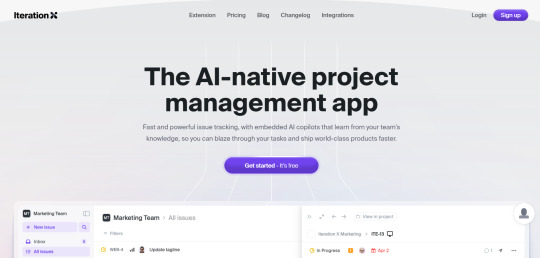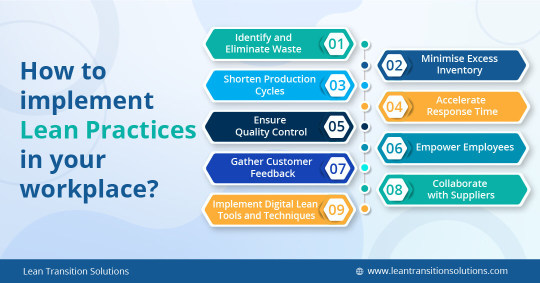#TaskTracking
Explore tagged Tumblr posts
Text
Best Task Management Software for Teams & Businesses in 2025 – With Munc Software
In today’s fast-paced work environment, efficient task management is the backbone of productivity and success. Whether you’re managing a small team or running a large enterprise, keeping track of tasks, deadlines, and priorities is crucial. This is where Task Management Software comes into play, helping businesses streamline operations, collaborate effectively, and meet their goals.
Munc Software offers a cutting-edge solution designed to enhance your task management capabilities. With powerful features, intuitive interfaces, and seamless integration, Munc Software is tailored to simplify your workflow and boost overall efficiency.
In this blog, we’ll explore the key benefits, must-have features, and practical use cases of task management software, highlighting how Munc Software can transform your business operations.

✅ What is Task Management Software?
Task Management Software is a digital tool designed to help individuals and teams plan, organize, and track tasks efficiently. It offers a centralized platform for managing:
Task creation and assignment
Progress tracking with real-time updates
Collaboration through comments and file sharing
Deadline management with automated reminders
Reporting and analytics for productivity insights
Whether used by freelancers, small businesses, or large organizations, task management software enhances productivity, reduces errors, and promotes better collaboration.
Key Benefits of Task Management Software
1. Improved Organization and Efficiency
Task management tools allow businesses to structure their workflow, assign responsibilities, and set deadlines. With Munc Software, you can:
Create task hierarchies and subtasks for complex projects.
Prioritize tasks to meet deadlines efficiently.
Use kanban boards, Gantt charts, or lists for easy visualization.
2. Enhanced Team Collaboration
Effective collaboration is essential for project success. Task management software enables team members to communicate, share updates, and stay aligned.
Munc Software offers in-app messaging and commenting features.
Real-time task updates ensure everyone stays on the same page.
Seamless file sharing simplifies document management.
3. Time and Deadline Management
Meeting deadlines is easier with automated reminders and notifications. Munc Software ensures:
No missed deadlines with customizable alerts.
Time tracking capabilities to monitor team productivity.
Detailed timelines to visualize project progress.
4. Better Resource Allocation
With clear task visibility, managers can allocate resources effectively.
Identify bottlenecks early.
Optimize team workloads.
Prevent burnout with balanced task distribution.
5. Data-Driven Insights
Munc Software offers detailed reports and analytics to assess project performance.
Gain insights into task completion rates.
Identify areas for improvement.
Use data to optimize future workflows.
🔥 Top Features of Munc Software’s Task Management Solution
✅ 1. User-Friendly Interface
Munc Software offers an intuitive and easy-to-navigate interface, ensuring that even non-tech-savvy users can efficiently manage their tasks.
✅ 2. Customizable Workflows
Tailor your task management process with custom fields, tags, and labels. Create workflows that suit your team’s specific needs.
✅ 3. Real-Time Collaboration
Share files, add comments, and discuss tasks in real time.
Keep all communication related to a task in one place.
✅ 4. Automated Notifications and Reminders
Stay on top of deadlines with automated alerts for upcoming or overdue tasks.
✅ 5. Advanced Reporting and Analytics
Track team productivity and project progress with detailed, customizable reports.
✅ 6. Integration Capabilities
Munc Software integrates with popular tools like:
Slack for communication.
Google Workspace for document collaboration.
CRM systems for customer management.
💡 How Munc Software Transforms Your Workflow
🛠️ 1. Simplifies Task Management
Easily assign and organize tasks using Munc Software’s drag-and-drop interface.
Create task dependencies to maintain order.
Set recurring tasks for regular activities.
�� 2. Streamlines Communication
Keep all project-related conversations in one place.
Use mention tags (@) to notify team members.
Add comments and attach files directly to tasks.
📊 3. Enhances Productivity with Automation
Save time with automated task scheduling and reminders.
Automatically assign repeat tasks.
Trigger notifications for pending or overdue tasks.
📈 4. Ensures Accountability
With clear task ownership, Munc Software ensures every team member is accountable for their responsibilities.
Status updates track progress.
Managers can review task history and performance.
💻 Use Cases: How Different Teams Use Munc Software
✅ 1. Project Management Teams
Plan and execute large projects efficiently.
Use Gantt charts to visualize progress.
Assign and prioritize tasks to meet deadlines.
✅ 2. Marketing Teams
Plan content calendars.
Assign design, writing, and review tasks.
Track campaign progress and performance.
✅ 3. Software Development Teams
Manage sprints and backlogs.
Assign bug fixes and feature updates.
Collaborate with testers and stakeholders.
✅ 4. HR and Admin Teams
Organize recruitment tasks.
Track onboarding processes.
Schedule and manage employee training.
🔥 Why Choose Munc Software for Task Management?
1. Customization and Flexibility
Munc Software offers fully customizable workflows, making it perfect for businesses of all sizes and industries.
2. Scalability
Whether you’re a startup or an enterprise, Munc Software scales with your business needs.
3. Security and Reliability
Your data is safe with end-to-end encryption and regular backups, ensuring high reliability.
4. Cost-Effective Pricing
Munc Software offers affordable plans with transparent pricing, making it a cost-effective solution for task management.
Final Thoughts: Boost Productivity with Munc Software
Task management software is no longer a luxury—it’s a necessity for any business aiming to stay organized, efficient, and competitive. With its comprehensive features and user-friendly interface, Munc Software empowers teams to manage tasks effectively, collaborate seamlessly, and meet deadlines effortlessly.
🔥 Ready to transform your task management process?
👉 Try Munc Software today and take your productivity to the next level!
❓ FAQs About Task Management Software
1. What makes Munc Software different from other task management tools?
Munc Software offers a highly customizable platform with seamless collaboration features, real-time updates, and detailed reporting capabilities, making it ideal for businesses of all sizes.
2. Is Munc Software suitable for remote teams?
Yes, Munc Software is perfect for remote teams. It offers real-time collaboration, communication, and progress tracking, making it easy to manage distributed teams.
3. Can Munc Software integrate with third-party applications?
Absolutely! Munc Software integrates with tools like Slack, Google Workspace, and CRM platforms, allowing you to streamline your workflow.
4. How does Munc Software ensure data security?
Munc Software uses end-to-end encryption and regular backups to ensure your data is secure and protected from unauthorized access.
5. Is Munc Software suitable for small businesses?
Yes, Munc Software offers scalable plans suitable for both small businesses and large enterprises.
#TaskManagement#TaskManagementSoftware#ProductivityTools#MuncSoftware#ProjectManagement#TaskTracking
0 notes
Text
In project management visual tools play a crucial role in planning, scheduling, and tracking tasks. One such indispensable tool is the Gantt chart. Whether you're managing a Finance project, software development, or marketing campaign, Gantt charts help streamline workflow, improve communication, and enhance productivity. This blog explores Gantt charts in depth, covering their advantages, disadvantages, key features, components, and various applications.
What is a Gantt Chart?
A Gantt chart is a type of bar chart that represents a project schedule. It illustrates tasks along a timeline, showing start and end dates, dependencies, and progress. Originally developed by Henry Gantt in the early 20th century, it has since evolved into a staple tool in project management.
#GanttChart#ProjectManagement#TaskPlanning#WorkflowOptimization#ProductivityTools#TimeManagement#GanttChartTemplate#ProjectScheduling#WorkManagement#TeamCollaboration#GanttChartExcel#BusinessPlanning#TaskTracking#SoftwareDevelopment#ConstructionManagement
0 notes
Text
#americans#ToggleTimer#TimeTracking#Productivity#TimeManagement#SmartWork#WorkEfficiency#TaskTracking#StayFocused#WorkSmart#BoostProductivity
0 notes
Text
#usa#BestTimeTrackingSoftware#TimesSoftware#TimeTracking#BestTimekeepingSoftware#ToggleTimer#RemoteWork#ProductivityTools#WorkFromHome#TimeManagement#ProjectManagement#SoftwareForMonitoringRemoteEmployees#TaskTracking#EfficiencyBoost#WorkSmart#DigitalTools
0 notes
Text
🚀 Work Smarter, Not Harder with Quantim!

Managing projects shouldn’t be a struggle! Quantim makes it simple with powerful tools designed for efficiency and collaboration.
✔️ Track projects effortlessly – Stay on top of tasks and deadlines. ✔️ Seamless collaboration – Keep your team connected and aligned. ✔️ Smart insights – Make informed decisions with real-time data.
💡 Get more done with less effort! 🌍 Learn more: quantim.co.uk
#Quantim#WorkSmarter#ProjectManagement#Productivity#TaskTracking#BusinessGrowth#SmartTools#Teamwork#TimeManagement#WorkflowAutomation#DigitalSuccess#ProjectEfficiency#CollaborationTools
0 notes
Text
Streamline Your Workflow with Norfield's Ticket Management Software
Are you looking for a reliable solution to enhance your operational efficiency? Norfield's ticket management software is designed to simplify task tracking, improve team collaboration, and optimize your ticket resolution process. With intuitive features and customizable workflows, our software ensures a seamless experience for businesses of all sizes.
Why choose Norfield's solution?
Efficient ticket allocation and tracking
Real-time updates for better team coordination
Data-driven insights to improve service delivery
Easy integration with existing systems
Whether you're in the utility sector or any service-driven industry, our software empowers you to manage tasks efficiently and meet customer expectations with ease. Find out how locating ticket management software can transform your operations.
Visit Norfield to learn more and request a demo today!
#TicketManagementSoftware#Norfield#TaskTracking#WorkflowOptimization#CustomerSupportTools#EfficientOperations#SoftwareSolutions
0 notes
Text

Risedigitech - Zoho Authorized Partner, offers expert guidance and customization. Zoho Projects is a powerful project management software that streamlines your workflow, helping teams track tasks, manage deadlines, and resolve issues efficiently. With an in-built issue tracker module, users can address problems in real-time while staying focused on project timelines.
Call Us: +91 8770896004 Website: https://zurl.co/L1rL
0 notes
Text
How Iteration X Enhances Workflow for Development Teams

In fast-paced development environments, managing projects efficiently is crucial. Iteration X provides a robust solution that empowers development teams to track issues and manage tasks effectively.
Problem Statement: Development teams often struggle with fragmented communication and inefficient issue tracking, leading to delays and missed deadlines.
Application: With Iteration X, development teams can capture issues as they arise using the real-time issue capture feature. For example, a team can document a bug directly from the interface, attaching screenshots and logs for context, while the AI copilot helps prioritize and assign tasks. This ensures everyone stays informed and focused on resolutions.
Outcome: By leveraging Iteration X, development teams can improve their productivity and streamline project management. The platform fosters better collaboration and reduces the time spent on managing issues, leading to faster project delivery.
Industry Examples:
Software Development: Use Iteration X to capture and manage bugs during the development cycle, ensuring timely fixes.
Product Design Teams: Leverage the platform for collaborative design feedback and issue tracking.
Agile Teams: Implement Iteration X to support sprint planning and task management efficiently.
Additional Scenarios: Iteration X can also assist marketing teams in managing campaigns and tracking performance metrics effectively
Discover how Iteration X can transform your team's project management processes. Get started today at aiwikiweb.com/product/iteration-x/
#DevelopmentTeams#IterationX#ProjectManagement#AIinBusiness#TaskTracking#AgileDevelopment#Efficiency#Collaboration#TechTools#Productivity
0 notes
Text
Top Project Management Software in Malaysia - Enhance Your Team’s Efficiency
Find the leading project management software in Malaysia to optimize team collaboration, task management, and project tracking. Our solutions offer real-time updates, intuitive interfaces, and seamless integration to boost productivity and ensure project success. Transform your project workflows with advanced tools designed for Malaysian businesses.
Call us at: +6 016 725 6662

#ProjectManagement#MalaysiaSoftware#TeamEfficiency#TaskTracking#ProductivityBoost#BusinessSolutions#MalaysiaTech
0 notes
Text

How to implement Lean Practices in your workplace ?
Implementing lean practices in your workplace can significantly improve efficiency, productivity, and overall business performance. Integrating these lean practices into your workplace can achieve a more efficient, responsive, and customer-focused organisation. Remember to continuously review and refine your processes to maintain a culture of continuous improvement.
For more details read our blog : https://leantransitionsolutions.com/Lean-Technology/what-is-lean-methodology
#leanmethodology#continuousimprovement#Leanpractices#ValueStream#Kanban#Kaizen#leantools#valuestreammapping#leantechniques#Leanmanufacturing#5Ssoftware#kanbansoftware#tasktracking#CMMSSoftware
0 notes
Text
Why Vabro is the Best Project Management App for Teams
Efficient project management tools are essential in today's dynamic business landscape.Project management apps have become essential for teams to stay organized, meet deadlines, and collaborate effectively. Among the myriad of options available, Vabro emerges as a top contender. But why is Vabro the best project management app for teams? Let's delve into its features, benefits, and what makes it stand out.
Features of Vabro
User-Friendly Interface
One of Vabro's standout features is its user-friendly interface. The design is intuitive, allowing users to navigate through the app with ease. Whether you're a tech-savvy professional or someone who’s new to project management software, Vabro ensures that you can get started without a steep learning curve.
Advanced Collaboration Tools
Collaboration is at the heart of successful project management, and Vabro excels in this area. The app includes advanced collaboration tools that facilitate real-time communication and teamwork. Features such as shared workspaces, instant messaging, and collaborative document editing ensure that everyone is on the same page.
Comprehensive Task Management
Managing tasks efficiently is vital for any project. Vabro offers comprehensive task management features, including task creation, assignment, prioritization, and tracking. The app also provides customizable workflows, allowing teams to tailor their task management processes according to their specific needs.
Real-Time Analytics and Reporting
Informed decision-making is powered by data, and Vabro provides robust real-time analytics and reporting tools. These features offer insights into project progress, resource allocation, and team performance. With Vabro, managers can generate detailed reports that help in identifying bottlenecks and optimizing workflows.
Benefits of Using Vabro
Increased Team Productivity
Vabro significantly boosts team productivity by automating routine tasks and providing tools that streamline project management processes. With everything organized in one place, team members spend less time searching for information and more time on productive work.
Enhanced Communication
Effective communication is key to successful project completion. Vabro enhances communication with its integrated messaging system, allowing team members to discuss tasks, share updates, and resolve issues quickly. The app also supports video conferencing, making remote meetings seamless.
Streamlined Workflow
Vabro’s customizable workflows help in creating a streamlined project management process. Teams can set up workflows that align with their methodologies, be it Agile, Scrum, or Kanban. This flexibility ensures that projects are managed efficiently from start to finish.
Scalability and Flexibility
Whether you're a small startup or a large enterprise, Vabro scales according to your needs. The app’s flexible features and pricing plans make it suitable for teams of all sizes. As your team grows, Vabro adapts, ensuring that your project management needs are always met.
Why Vabro Stands Out
Comparison with Other Project Management Apps
When compared to other project management apps, Vabro consistently outperforms in terms of user experience, feature set, and customer support. While many apps offer similar functionalities, Vabro integrates them into a seamless, easy-to-use platform that enhances overall productivity.
Unique Selling Points
Vabro’s unique selling points include its real-time analytics, customizable workflows, and advanced collaboration tools. Additionally, the app’s focus on user experience sets it apart from competitors, making it a preferred choice for teams looking for an efficient project management solution.
Use Cases for Vabro
For Small Teams
Small teams benefit from Vabro's straightforward setup and user-friendly interface. The app’s affordable pricing and robust feature set make it an ideal choice for startups and small businesses looking to improve their project management processes.
For Large Organizations
Large organizations require scalable solutions that can handle complex projects and large teams. Vabro’s advanced features, such as real-time analytics and customizable workflows, make it suitable for enterprises that need a powerful project management tool.
For Remote Teams
Remote work is becoming increasingly common, and Vabro is designed to support remote teams effectively. Its collaboration tools, including instant messaging and video conferencing, ensure that remote team members can work together seamlessly, regardless of their physical location.
Conclusion
In summary, Vabro stands out as the best project management app for teams due to its user-friendly interface, advanced collaboration tools, comprehensive task management, and real-time analytics. The app not only enhances productivity and communication but also offers scalability and flexibility, making it suitable for teams of all sizes. Whether you’re a small team, a large organization, or a remote workforce, Vabro provides the tools you need to manage your projects efficiently.
FAQs
1. What makes Vabro different from other project management apps? Vabro differentiates itself with its intuitive user interface, advanced collaboration tools, and real-time analytics. Its focus on user experience and flexibility sets it apart from competitors.
2. Is Vabro suitable for remote teams? Absolutely! Vabro's integrated messaging, video conferencing, and collaborative features make it ideal for remote teams, ensuring seamless communication and collaboration.
3. How does Vabro improve team productivity? Vabro improves productivity by automating routine tasks, streamlining workflows, and providing comprehensive task management features that keep teams organized and focused on their goals.
4. Can Vabro be integrated with other tools? Yes, Vabro supports integration with various other tools and platforms, making it easy to connect your existing software and streamline your workflow.
5. Is there a free trial available for Vabro? Yes, Vabro offers a free trial, allowing teams to explore its features and determine if it meets their project management needs before committing to a subscription.
#BestProjectManagementApp#ProjectManagementSoftware#BusinessProductivity#TeamCollaboration#TaskManagement#ProjectPlanning#AgileProjectManagement#RemoteTeamTools#CloudBasedPM#ProductivityApps#WorkflowManagement#TaskTracking#TimeManagementTools#ProjectManager#TeamEfficiency#ProjectDashboard#MobileProjectManagement#OnlineProjectManagement#ProjectManagementSystem
0 notes
Text
In project management, finding the right tools and methodologies to streamline processes and enhance team collaboration is crucial. One such tool that has gained significant popularity across various industries is the Kanban board. Originating from the Japanese manufacturing sector, Kanban has evolved into a versatile project management tool applicable to a wide range of projects. This blog will delve into why using a Kanban board can be a game-changer for your projects.
#ProjectManagement#KanbanBoard#Efficiency#TeamCollaboration#WorkflowOptimization#Agile#Productivity#VisualManagement#TaskManagement#ContinuousImprovement#LeanManagement#Flexibility#WorkInProgress#ProjectSuccess#CollaborationTools#ProjectPlanning#WorkFlow#ProcessImprovement#TeamEfficiency#TaskTracking
0 notes
Text
Take Control of Your Time with Toggle Timer for Productivity
#united states#ToggleTimer#TimeManagement#ProductivityTools#StayFocused#WorkSmart#TaskTracking#BestTimeTrackingSoftware#TimeEfficiency#GetThingsDone
0 notes
Text
Take Control of Your Time with Toggle Timer for Productivity
#usa#ToggleTimer#TimeManagement#ProductivityTools#StayFocused#WorkSmart#TaskTracking#BestTimeTrackingSoftware#TimeEfficiency#GetThingsDone
0 notes
Text
Discover how Vegas Connit revolutionizes project management in the oil and gas sector with its tailored features and seamless collaboration capabilities. From effective task tracking to optimized resource utilization, Vegas Connit drives efficiency and success in every project.
#vegasconsulting#vegasconnit#projectmanagementtool#apispecq1#apispecq2#gapanalysis#conformitymatrix#apicompliance#apistandards#qms#colloboration#tasktracking#documentreview#efficiency#resourceutilization#ClientAccessibility#Scalability#Adaptability#issueresolution#resourceallocation#oilandgas#apiq1#apiq2
0 notes
Text
youtube
Project Management System By Connect Infosoft Technologies Pvt. Ltd. | CMS Web Development Company
Get very smart, simple and easy Projects Management System at affordable price.
#connectinfosofttechnologies#confnectinosoft#projectsmanagementsystem#cmswebdevelopment#clientintrectionsoftware#saassoftware#projectmanagementtools#webbasedprojectmanagement#freeprojectmanagementtools#bestprojectmanagementtools#onlineprojectmanagementfree#onlineprojectmanagementtools#businessmanagementsoftware#unlimitedinvoices#projectmanagementsoftware#projectmanagement#pmsystem#tasktracking#projectplanning#teamcollaboration#workflowmanagement#taskmanagement#agilepm#projectcoordination#productivitytools#projectdashboard#resourcemanagement#scrummaster#projectsuccess#pmsoftware
1 note
·
View note